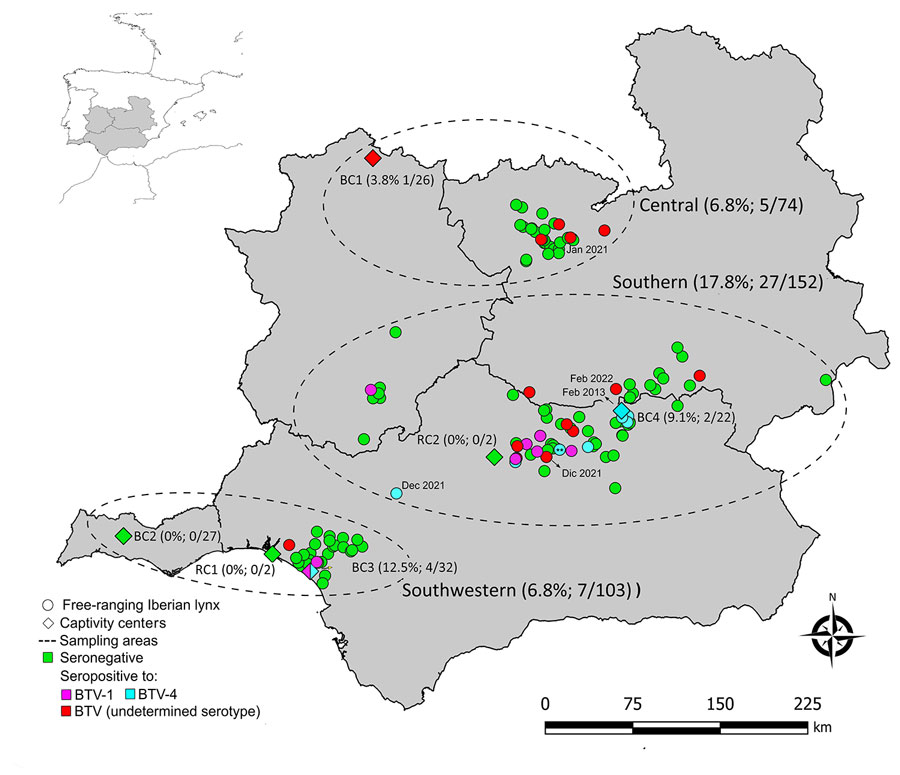Volume 30, Number 10—October 2024
Dispatch
Bluetongue Virus in the Iberian Lynx (Lynx pardinus), 2010–2022
Figure 1

Figure 1. Spatial distribution and BTV serologic results of the Iberian lynxes (Lynx pardinus) sampled in the Iberian Peninsula during 2010–2022. The frequency of seropositivity and the numbers of seropositive and total of animals analyzed by ELISA at each sampling region and captivity center are shown in parentheses. Inset map shows location of study area on the Iberian Peninsula. **Animal tested positive for BTV RNA. BC, breeding center; BTV, bluetongue virus; RC, recovery center of threatened species.
Page created: September 03, 2024
Page updated: September 23, 2024
Page reviewed: September 23, 2024
The conclusions, findings, and opinions expressed by authors contributing to this journal do not necessarily reflect the official position of the U.S. Department of Health and Human Services, the Public Health Service, the Centers for Disease Control and Prevention, or the authors' affiliated institutions. Use of trade names is for identification only and does not imply endorsement by any of the groups named above.